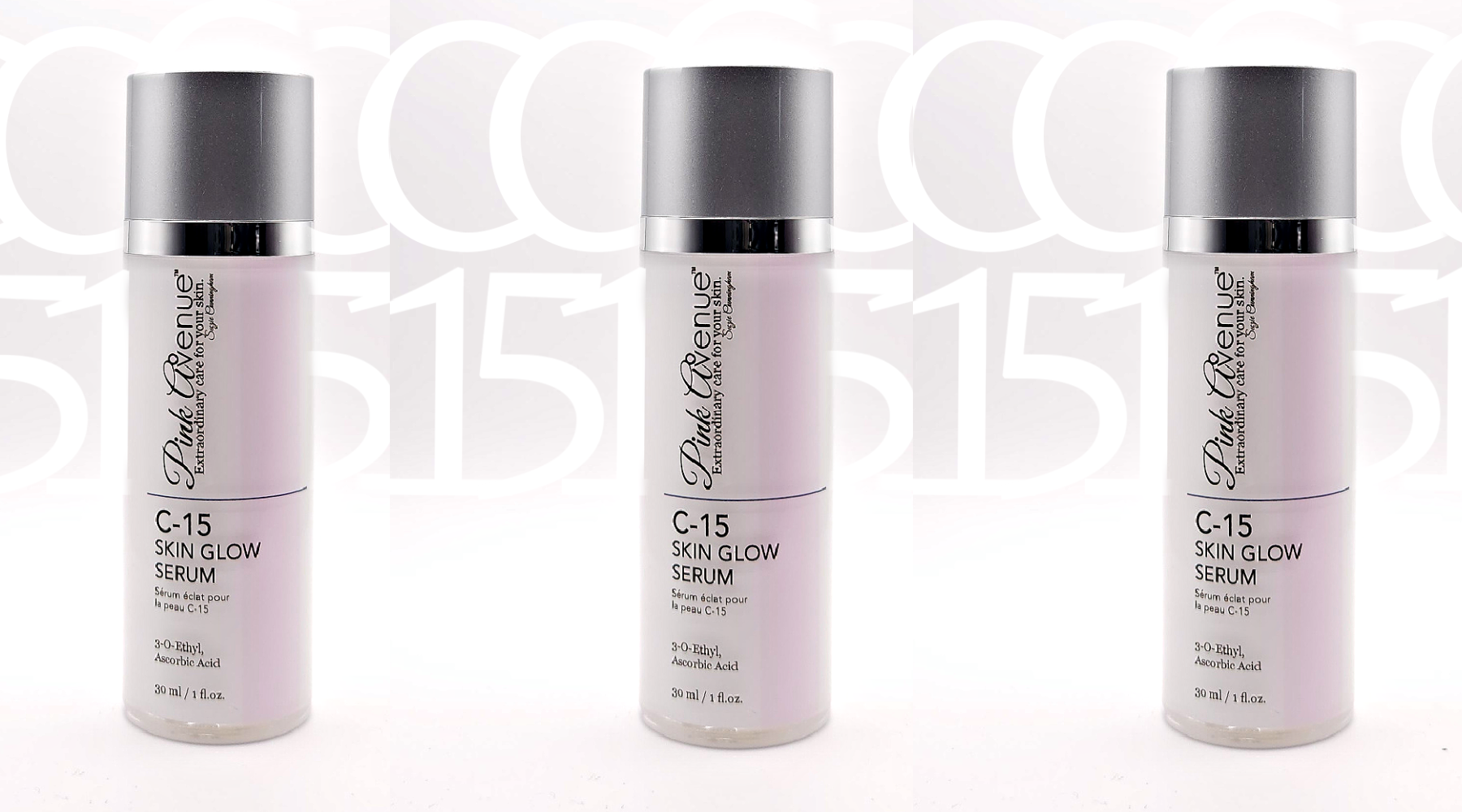Unlocking Radiance: The Science Behind 3-O Ethyl Ascorbic Acid in Pink Avenue's C15 Skin Glow Serum

Unlocking Radiance: The Science Behind 3-O Ethyl Ascorbic Acid.
Pink Avenue's C15 Skin Glow Serum
In the realm of skincare, the quest for that coveted glow and radiant complexion is unceasing. From ancient remedies to modern innovations, various compounds have been explored for their skin-enhancing properties. Among these, 3-O Ethyl Ascorbic Acid emerges as a promising ingredient, backed by scientific research and lauded for its potent benefits.
What is 3-O Ethyl Ascorbic Acid?
3-O Ethyl Ascorbic Acid is a stable derivative of Vitamin C, a powerhouse antioxidant renowned for its ability to brighten skin, even out tone, and stimulate collagen production. Unlike its counterparts, such as L-ascorbic acid, which can be unstable and prone to oxidation, 3-O Ethyl Ascorbic Acid boasts enhanced stability and efficacy, making it a star ingredient in modern skincare formulations.
The Science Behind 3-0 Ethyl Ascorbic Acid
Numerous scientific studies underscore the efficacy of 3-O Ethyl Ascorbic Acid in skincare. Research published in the Journal of Cosmetic Dermatology demonstrates its ability to inhibit melanin production, effectively reducing the appearance of dark spots and hyperpigmentation. This is attributed to its role in suppressing tyrosinase activity, an enzyme crucial for melanin synthesis [1].
Moreover, a study featured in the Journal of Drugs in Dermatology highlights the antioxidant properties of 3-O Ethyl Ascorbic Acid, emphasizing its capacity to neutralize free radicals and protect the skin from oxidative stress-induced damage. This not only combats signs of aging but also promotes overall skin health and resilience [2].
Furthermore, research published in the International Journal of Cosmetic Science elucidates the collagen-boosting effects of 3-O Ethyl Ascorbic Acid. By stimulating collagen synthesis, it helps improve skin firmness and elasticity, diminishing the appearance of fine lines and wrinkles [3].
Pink Avenue C-15 3-0 Ethyls Ascorbic Acid Serum:
The Benefits for Your Skin
Incorporating a 3-O Ethyl Ascorbic Acid serum into your daily skincare routine can yield a multitude of benefits:
Brightening: By inhibiting melanin production, 3-O Ethyl Ascorbic Acid can visibly brighten the skin, reducing the appearance of dark spots, sun damage, and dullness.
Antioxidant Protection: Its potent antioxidant properties shield the skin from environmental aggressors, thereby preventing premature aging and preserving youthful radiance.
Boost Skin Firmness: Stimulating collagen production promotes skin firmness and elasticity, resulting in a smoother, more supple complexion with diminished fine lines and wrinkles.
Gentle on all skin types, including sensitive: Unlike some Vitamin C derivatives, 3-O Ethyl Ascorbic Acid is gentle on the skin, making it suitable for all skin types, including sensitive skin.
How to Incorporate Pink Avenue C15 Skin Glow 3-0 Ethyl Ascorbic Acid Serum into Your Routine
To reap the benefits of 3-O Ethyl Ascorbic Acid, consider integrating it into your daily skincare regimen. For optimal results, apply 1- 2pumps onto cleansed, dry skin before other serums and moisturizer, preferably in the morning to capitalize on its antioxidant properties and protect against daytime environmental stressors.
3-0 Ethyl Ascorbic Acid, gateway to visible skin rejuvenation.
In the quest for luminous, youthful skin, 3-O Ethyl Ascorbic Acid stands out as a scientifically-backed powerhouse ingredient. Its ability to brighten, protect, and rejuvenate the skin makes it a valuable addition to any skincare routine. Backed by research and embraced by skincare enthusiasts worldwide, this derivative of Vitamin C offers a pathway to radiant complexion and timeless beauty.
References:
Kim, So Hee et al. “Inhibitory effects of 3-O-ethyl-L-ascorbic acid on melanogenesis in vitro and in vivo.” Journal of cosmetic dermatology vol. 19,1 (2020): 73-79.
Fitzpatrick, R. E. et al. “Double-Blind, Half-Face Study Comparing Topical Vitamin C and Vehicle for Rejuvenation of Photodamage.” Journal of Drugs in Dermatology 1.3 (2002): 301–305.
Matsuda, Osamu et al. “Effect of vitamin C on collagen biosynthesis and degree of birefringence in cultured fibroblasts.” International journal of cosmetic science vol. 27,5 (2005): 355-359.



